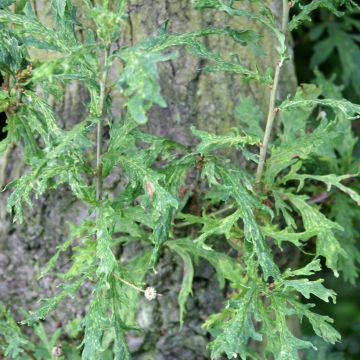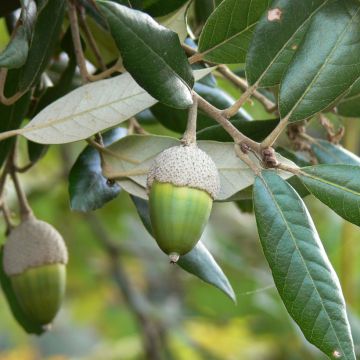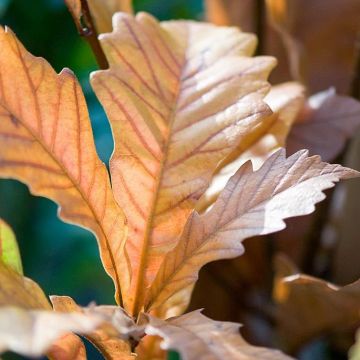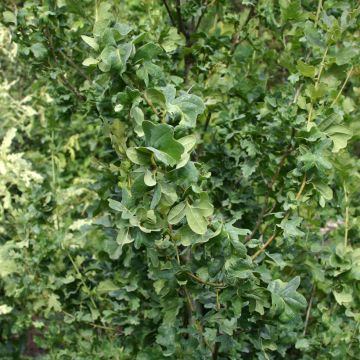

Quercus robur Atropurpurea - English Oak
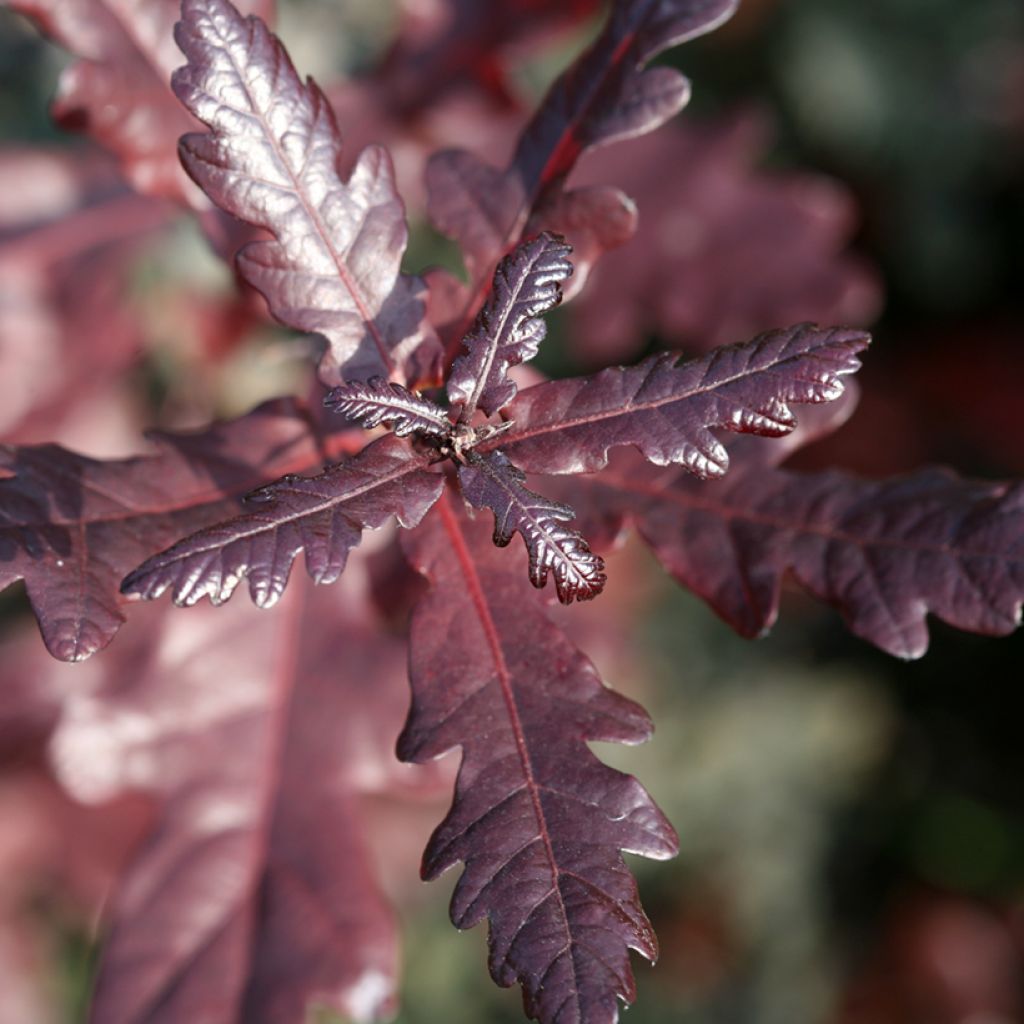

Quercus robur Atropurpurea - English Oak
Quercus robur Atropurpurea - English Oak
Quercus robur Atropurpurea
English Oak, Common Oak, Pedunculate Oak
This item cannot be shipped to the selected country
Delivery charge from €5.90
Delivery to Corse prohibited
More information
Schedule delivery date,
and select date in basket
This plant carries a 24 months recovery warranty
More information
We guarantee the quality of our plants for a full growing cycle, and will replace at our expense any plant that fails to recover under normal climatic and planting conditions.
From €5.90 for pickup delivery and €6.90 for home delivery
Express home delivery from €8.90.
Delivery to Corse prohibited: UE law prohibits the import of this plant from mainland France to Corse as part of the fight against Xylella fastidiosa. Please accept our sincere apologies.
More information
Does this plant fit my garden?
Set up your Plantfit profile →
Description
The Quercus robur 'Atropurpurea' is a purple form of the English Oak, much rarer than the cultivar 'Purpurascens'. The tree is characterised by a "stunted" appearance, foliage that varies in shades of purple throughout the seasons, and a compact and rounded habit. Its young leaves, heavily tinged with coppery red during bud burst period, gradually turn to velvety burgundy violet, then to greyish purple green in summer. A collector's tree for large gardens!
The English Oak, also known as the Pedunculate Oak, English Oak, Common Oak, or Gravelin depending on the region, belongs to the family Fagaceae. It is native to a large part of temperate Europe. This species thrives in sub-oceanic to oceanic climates, and even slightly continental climates, that are relatively humid. It is very common in our lowland and low-altitude hills, but rare in the Southern Alps and Mediterranean region, which are too dry and hot. In its natural environment, it can reach a height of 50m with a spread of 25 to 30m, while its trunk can measure up to 2m in diameter. With a relatively exceptional longevity, this oak can live up to 2000 years according to some estimates.
The Quercus robur 'Atropurpurea' will reach approximately 12m in height and 8-10m in spread after many years. This oak has a slow growth rate. Its habit is generally rounded, with a dense and rather closed crown. The short trunk is covered with a thick and deeply fissured grey and dark bark. Its young branches are glabrous and purple in colour, and shiny. The deciduous foliage is composed of alternate, soft, obovate leaves that can reach 5 to 15cm in length and 3 to 8cm in width. Each leaf has 5 to 7 pairs of rounded, variable-sized, asymmetrical lobes separated by more or less deep sinuses. The colour of the lamina changes from shiny coppery red to velvety burgundy violet, and then to greyish purple green in summer, with the underside being duller. The leaves turn brown quite late in autumn and remain attached to the branches before falling. This oak blooms in April-May, shortly after the appearance of the foliage, on the annual shoots. The female flowers, greenish-yellow in colour, are placed in a cupule carried by a long peduncle: this distinctive characteristic is the origin of the species name, pedunculata. The male inflorescences are elongated, pendulous catkins tinged with yellow. They are produced on older branches. The female flowers give way to ovoid and elongated acorns, measuring 1.5 to 3cm in length. They are often grouped in pairs or threes and attached to a long peduncle. A cupule covered with scales covers one-third of the acorn. The colour changes from green to brown when ripe, in September and October. The root system of this tree is deep and powerful, with both a taproot and a spreading root system, ensuring a solid and lasting grip in deep and compact soils.
The 'Atropurpurea' English Oak, rare and magnificent, will become one of the centrepiece of a large garden. Its purple-toned foliage pairs perfectly with the golden foliage of the 'Concordia' Oak 'Quercus robur 'Concordia'' and the 'Sunburst' Honeylocust Gleditsia triacanthos 'Sunburst', as well as the silvery foliage of the 'Liempde' Willow 'Salix alba 'Liempde'' and the 'Nivea' White Poplar Populus alba 'Nivea'. It should be planted in a prominent, isolated location. This tree also provides the advantage of providing pleasant shade, which reflects light in winter, and producing abundant leaf litter, which is beneficial for the growth of certain plants that germinate under its cover. Its fruits feed small animals such as squirrels and jays.
France, with 4.5 million hectares of Sessile Oak (Quercus petraea) and English Oak (Quercus robur), has 30 to 40% of the total area covered by these two species in Europe. It is the leading oak producer in Europe and the second-largest in the world, after the USA. France is the country of oaks!
Report an error about the product description
Plant habit
Flowering
Foliage
Botanical data
Quercus
robur
Atropurpurea
Fagaceae
English Oak, Common Oak, Pedunculate Oak
Quercus robur f. atropurpurea
Cultivar or hybrid
Other Oak
Planting and care
Quercus robur 'Atropurpurea' grows in ordinary soil, but deep, moist, moderately dry, preferably clayey, slightly chalky, neutral or slightly acidic. Once established, this tree with deep roots can withstand normal summers and does not require any watering. This oak succeeds almost everywhere, except by the sea, It appreciates moist, but well-drained soils, where its growth will be faster. It prefers very sunny and open exposures. Place a sturdy stake to help it start, follow the watering, and then let nature take its course. It is a tree that, once established, requires very little maintenance except for the removal of dead wood. It is not very susceptible to diseases, only powdery mildew is to be feared on its foliage. Its foliage is also subject to galls, but this is not very troublesome for the tree.
Planting period
Intended location
Care
This item has not been reviewed yet - be the first to leave a review about it.
Striking foliage shrubs
Haven't found what you were looking for?
Hardiness is the lowest winter temperature a plant can endure without suffering serious damage or even dying. However, hardiness is affected by location (a sheltered area, such as a patio), protection (winter cover) and soil type (hardiness is improved by well-drained soil).

Photo Sharing Terms & Conditions
In order to encourage gardeners to interact and share their experiences, Promesse de fleurs offers various media enabling content to be uploaded onto its Site - in particular via the ‘Photo sharing’ module.
The User agrees to refrain from:
- Posting any content that is illegal, prejudicial, insulting, racist, inciteful to hatred, revisionist, contrary to public decency, that infringes on privacy or on the privacy rights of third parties, in particular the publicity rights of persons and goods, intellectual property rights, or the right to privacy.
- Submitting content on behalf of a third party;
- Impersonate the identity of a third party and/or publish any personal information about a third party;
In general, the User undertakes to refrain from any unethical behaviour.
All Content (in particular text, comments, files, images, photos, videos, creative works, etc.), which may be subject to property or intellectual property rights, image or other private rights, shall remain the property of the User, subject to the limited rights granted by the terms of the licence granted by Promesse de fleurs as stated below. Users are at liberty to publish or not to publish such Content on the Site, notably via the ‘Photo Sharing’ facility, and accept that this Content shall be made public and freely accessible, notably on the Internet.
Users further acknowledge, undertake to have ,and guarantee that they hold all necessary rights and permissions to publish such material on the Site, in particular with regard to the legislation in force pertaining to any privacy, property, intellectual property, image, or contractual rights, or rights of any other nature. By publishing such Content on the Site, Users acknowledge accepting full liability as publishers of the Content within the meaning of the law, and grant Promesse de fleurs, free of charge, an inclusive, worldwide licence for the said Content for the entire duration of its publication, including all reproduction, representation, up/downloading, displaying, performing, transmission, and storage rights.
Users also grant permission for their name to be linked to the Content and accept that this link may not always be made available.
By engaging in posting material, Users consent to their Content becoming automatically accessible on the Internet, in particular on other sites and/or blogs and/or web pages of the Promesse de fleurs site, including in particular social pages and the Promesse de fleurs catalogue.
Users may secure the removal of entrusted content free of charge by issuing a simple request via our contact form.
The flowering period indicated on our website applies to countries and regions located in USDA zone 8 (France, the United Kingdom, Ireland, the Netherlands, etc.)
It will vary according to where you live:
- In zones 9 to 10 (Italy, Spain, Greece, etc.), flowering will occur about 2 to 4 weeks earlier.
- In zones 6 to 7 (Germany, Poland, Slovenia, and lower mountainous regions), flowering will be delayed by 2 to 3 weeks.
- In zone 5 (Central Europe, Scandinavia), blooming will be delayed by 3 to 5 weeks.
In temperate climates, pruning of spring-flowering shrubs (forsythia, spireas, etc.) should be done just after flowering.
Pruning of summer-flowering shrubs (Indian Lilac, Perovskia, etc.) can be done in winter or spring.
In cold regions as well as with frost-sensitive plants, avoid pruning too early when severe frosts may still occur.
The planting period indicated on our website applies to countries and regions located in USDA zone 8 (France, United Kingdom, Ireland, Netherlands).
It will vary according to where you live:
- In Mediterranean zones (Marseille, Madrid, Milan, etc.), autumn and winter are the best planting periods.
- In continental zones (Strasbourg, Munich, Vienna, etc.), delay planting by 2 to 3 weeks in spring and bring it forward by 2 to 4 weeks in autumn.
- In mountainous regions (the Alps, Pyrenees, Carpathians, etc.), it is best to plant in late spring (May-June) or late summer (August-September).
The harvesting period indicated on our website applies to countries and regions in USDA zone 8 (France, England, Ireland, the Netherlands).
In colder areas (Scandinavia, Poland, Austria...) fruit and vegetable harvests are likely to be delayed by 3-4 weeks.
In warmer areas (Italy, Spain, Greece, etc.), harvesting will probably take place earlier, depending on weather conditions.
The sowing periods indicated on our website apply to countries and regions within USDA Zone 8 (France, UK, Ireland, Netherlands).
In colder areas (Scandinavia, Poland, Austria...), delay any outdoor sowing by 3-4 weeks, or sow under glass.
In warmer climes (Italy, Spain, Greece, etc.), bring outdoor sowing forward by a few weeks.





































